Solving Quadratic Equations
Using the square root property it is possible to solve any
quadratic equation written in the form
( x + b )2 = c . The key to setting these problems into the correct form is to
recognize that
(x + b)2 is a perfect square trinomial. To turn the equation given into one
that can be solved using the square root property, the following must be done:
Given : ax2 + bx + c = 0
1.) If a ≠ 1 divide both sides by a.
2.) Rewrite the equation so that both terms containing variables are on one side
of the equation and the constant is on the other.
3.) Take half of the coefficient of x and square it.
4.) Add the square to both sides.
5.) One side should now be a perfect square trinomial.
Write it as the square of a binomial.
6.) Use the square root property to complete the solution.
Example 1. Solve 2a2 – 4a – 5 = 0 by completing the square.
Solution
Step 1: Divide the equation by a

Step 2: Move the constant term to the right side of the
equation

Step 3: Take half of the coefficient for x and square it

Step 4: Add the square to both sides of the equation

Example 1 (Continued):
Step 5: Factor the perfect square trinomial

Step 6: Take the square root of both sides
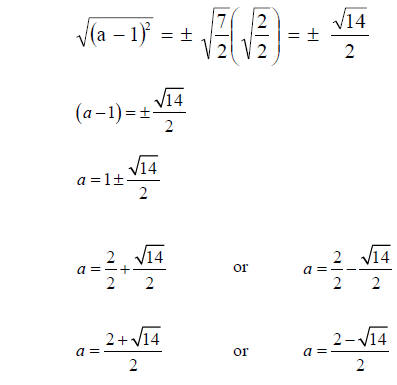
Example 2. Solve 9a2– 24a = -13 by completing the square.
Solution
Step 1: Divide the equation by a

Step 2: Move the constant term to the right side of the
equation

Example 2 (Continued):
Step 3: Take half of the coefficient for x and square it
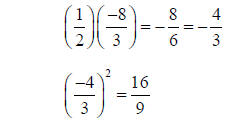
Step 4: Add the square to both sides of the equation
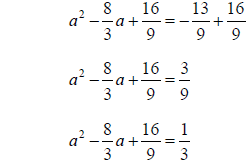
Step 5: Factor the perfect square trinomial

Step 6: Take the square root of both sides
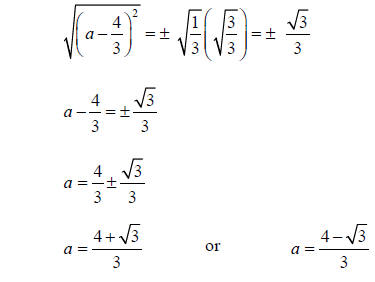
Example 3. Solve 9x2 – 30x + 29 by completing the square.
Solution
Step 1: Divide the equation by a

Step 2: Move the constant term to the right side of the
equation

Step 3: Take half of the coefficient for x and square it
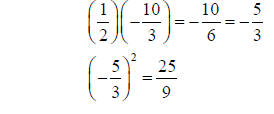
Step 4: Add the square to both sides of the equation
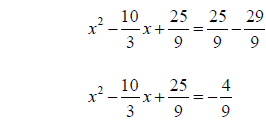
Step 5: Factor the perfect square trinomial

Example 3 (Continued):
Step 6: Take the square root of both sides
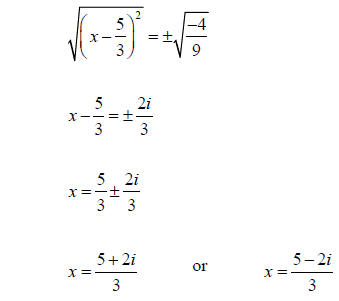
|